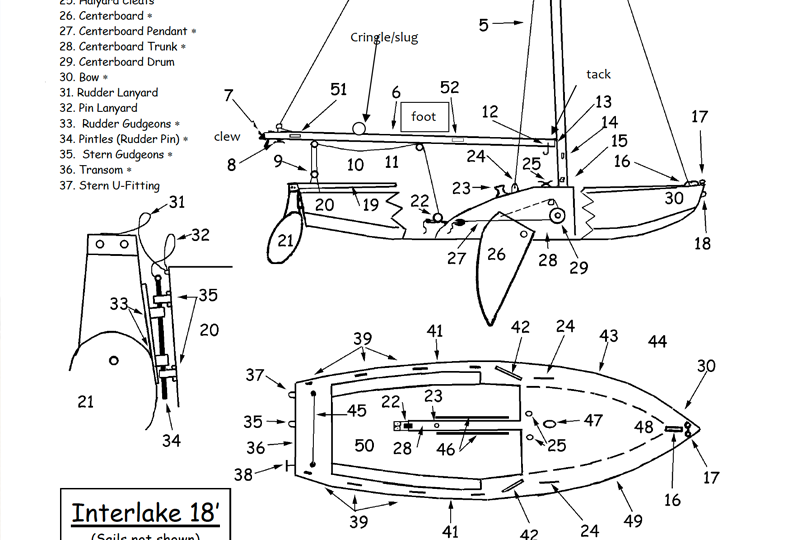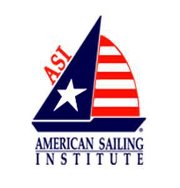Interlake Parts

Interlake 18.
(Sails not shown)
The Cover on the boat keeps it somewhat dry and protected from the elements. It should be folded and stowed in the dock box when not in use.
Centerboard gives stability to the boat and reduces leeway. Lowering the centerboard is necessary to sail upwind. Lower it gently.
Dockmaster is an ASI sailor assigned to facilitate sailing at Kent Lake on weekends and holidays. A non-rated sail pass holder may serve as assistant dockmaster, performing those duties not requiring a rating, provided that a rated dockmaster is also on duty. The dockmaster sees that the sailing program operates safely and within the honor system that guides the entire program. Dockmasters have the authority of ASI at the lake. They assist at the dock, as needed, with take-off and landing. They will also help student sailors get together with rated sailors so they can sail. See further explanation of the Dockmaster Duties in the ASI Member Handbook and in the sign-out book in the dock box at Kent Lake.
Equipment required on the boat should be inventoried each time you go out. It includes paddles, life jackets, a throwable flotation cushion, bailers, sponge, bucket, anchor, sails and a man-overboard bottle. Also check the condition of the rigging and the boat before going out.
Knots are an important part of sailing, and you will be given a specific handout showing the basic knots needed in Level 1, including the cleat hitch, clove hitch, bowline and square knot (also called reef knot). If you want to practice on your own, procure two pieces of line about two feet in length. You may wish to bring these lines with you to the class sessions.
Life jackets (also called Personal Flotation Devices (PFDs)) are required, by law, to be on the boats when out on the water. PFDs rated Type II (the orange ones provided by ASI) are designed to turn an unconscious person face up in the water. They are designed for adults weighing at least 90 pounds. PFDs are an important safety precaution when sailing and students are requested to wear them during the instruction program. If a student has his/her own Coast Guard approved life jacket he/she may bring and wear it during the instruction. A throwable flotation cushion is also required by law to be in the boat when operating on the water.
Rudder and Tiller comprise the steering mechanism for the boat. The rudder blade pivots on a bolt that enables the rudder blade to kick up if it hits an underwater obstruction. The tillers should remain on the boats they belong to, since they are not interchangeable. Tillers should be left on the seat opposite the finger dock for temporary storage, or placed under the seat, on top of the flotation or under the foredeck for overnight storage.
Sails power the boat. The Interlake carries about 175 square feet of sail. Sails are made of Dacron. The corners of the sail are called the head (at the top), tack (lower corner closest to the bow) and clew (lower corner closest to the stern of the boat). The edges of the sail are called the foot (at the bottom), luff (nearest the bow) and leech (nearest the stern). Interlakes have two sails: the main and the jib. We bend on the sails and use halyards to raise them. The sails have battens to hold their shape by supporting the roach. Sails are expensive and must be handled with care. Never drag the sails on the concrete or step on them. Fold them properly and stow them in the sail bag.
Standing rigging consists of the shrouds and forestay (which hold up the mast) and the topping lift (which holds up the boom). It remains in place at all times and does not move (compare to running rigging). It is not adjustable on Interlakes when under sail.
Running rigging consists of halyards (one for each sail), jib sheets and main sheet (to control the position of the respective sails while sailing). The running rigging moves while under sail (compare to standing rigging). The halyards are used to raise and lower sails. The sheets control the sails while underway. There are jam cleats and a winch on the boat to assist in controlling the sails
